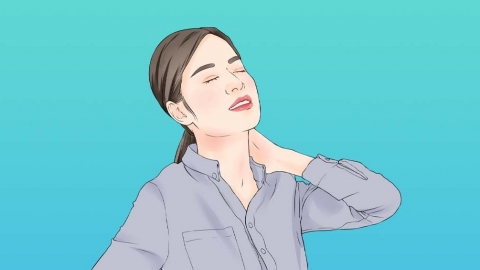How to relieve tightness and stiffness in the left neck muscle
Under normal circumstances, tightness and stiffness in the left neck muscles may be caused by prolonged poor posture, neck exposure to cold, neck muscle strain, cervical spondylosis, or cervical facet joint dysfunction. It is recommended to seek medical attention promptly, identify the underlying cause, and then improve symptoms under a doctor's guidance through general treatments, medications, and other methods. Specific analyses are as follows:

1. Prolonged Poor Posture: Continuously looking down at a mobile phone or working at a desk keeps neck muscles in a sustained stretched state, leading to tightness and stiffness on the left side. This is common among office workers and frequent phone users. Adjust sitting and standing postures to maintain a neutral neck position. Get up and move the neck for 5 minutes every 30 minutes of work, performing simple exercises such as tilting the head back and turning it side to side to relieve muscle tension.
2. Neck Exposure to Cold: When the neck is exposed to cold environments, cold stimulation can trigger muscle spasms on the left side of the neck, causing a sensation of tightness and stiffness—particularly common during autumn and winter. Add warm clothing promptly, and apply a hot water bottle or warm towel to the neck for heat therapy, 15–20 minutes per session, 2–3 times daily, to promote local blood circulation and relieve muscle spasms.
3. Neck Muscle Strain: Repeated neck movements or excessive physical strain over time can lead to chronic injury in the left neck muscles, manifesting as tightness, stiffness, and accompanying soreness. Patients should follow medical advice to apply topical medications such as diclofenac diethylamine gel, flurbiprofen gel patches, or musk bone-strengthening plasters directly to the affected area.
4. Cervical Spondylosis: A cervical disc protruding toward the left posterior side may compress nerve roots, causing muscle tension on the left side of the neck, resulting in tightness and stiffness, possibly accompanied by arm numbness. Patients should take medications such as celecoxib capsules, etoricoxib tablets, or mecobalamin tablets as prescribed, and combine treatment with physical therapies like cervical traction and acupuncture to reduce nerve compression and alleviate discomfort.
5. Cervical Facet Joint Dysfunction: Misalignment of the small cervical joints causes compensatory tightening and stiffness in the left neck muscles, with noticeable pain during movement. A professional physician should perform manual reduction of the cervical facet joints, using hands-on techniques to realign the joints, restore normal cervical anatomy, and relieve muscle tension.
In daily life, it is important to keep the neck warm, avoid sudden or vigorous neck movements, choose pillows of appropriate height to maintain the natural curvature of the cervical spine, and perform regular neck stretching exercises to strengthen neck muscles. Comprehensive care can help reduce symptoms of left-side neck muscle tightness and stiffness and support overall neck health.




